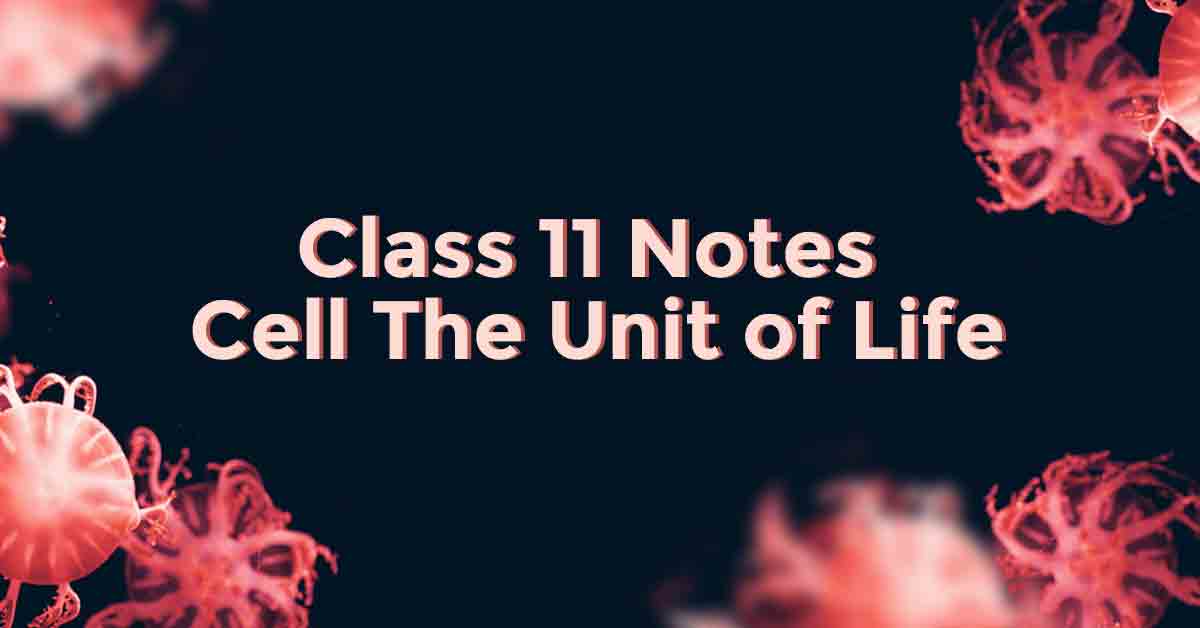Cell-The Unit of Life
- Study of form, structure, and composition of the cell is called cytology.
- Cell is the structural and functional unit of life. In unicellular organisms (amoeba, paramecium, yeast, bacteria) single cell performs all the essential functions of life.
- In multicellular organisms, different kinds of tissues perform different functions and have a division of labor.
- Anton Von Leeuwenhoek first saw and described a live cell. Robert Brown later discovered the nucleus.
- Metthias Schleiden and Theodore Schwann( 1938) proposed the cell theory which was later modified by Rudolf Virchow(1855)-
- All living organisms are composed of cells and products of cells.
- All cells arise from pre-existing cells.
Now let us study the difference between Prokaryotic and Eukaryotic Cells
Prokaryotic Cell
Eukaryotic cell size
Size is 0.1- 5.0 um
Size is 5-100 um
Nucleus is absent
Nucleus is present
Membrane-bound nucleus absent.
A membrane-bound Nucleus is present.
One chromosome is present, but not true chromosome plastids
More than one number of chromosomes is present.
Unicellular
Multicellular
Lysosomes and Peroxisomes absent
Lysosomes and Peroxisomes present
Microtubules absent
Microtubules prevent endoplasmic
Endoplasmic reticulum absent
Endoplasmic reticulum present mitochondria absent
Mitochondria absent
Mitochondria present
Cytoskeleton aprevent ribosomes
Cytoskeleton present
Ribosomes small larger vesicles
Ribosomes larger
Vesicles present
Vesicles present
Golgi apparatus absent
Golgi present chloroplasts
Chloroplasts absent; chlorophyll scattered in the cytoplasm
Chloroplasts present in plants
Submicroscopic in size Flagella is present and made up of only one fiber
Microscopic in size, membrane-bound cell
Cell wall chemically completed cell-cell
Cell wall is present in plants and fungi and chemically simple vacuoles
Vacuoles absent
Vacuoles prevent permeability
Permeability of Nuclear me prevent permeability
Permeability of Nuclear membrane is selective sexual
Sexual reproduction is absent asexual sexual
Sexual reproduction is prevent endocytosis endocytosis
Endocytosis and exocytosis are absent.
Endocytosis and exocytosis occurred
It may have pili and fimbriae.
Pili and fimbriae are absent
Transcription occurs in the cytoplasm
Transcription occur inside the nucleus.
Examples: Bacteria and Archaea
Examples: Protists, Fungi, Plants, and Animals
Prokaryotic Cells : The shape and size of cells vary greatly according to their position and function. Mycoplasma is the smallest cell and the largest isolated cell is the ostrich egg. The shape of the cell may be cuboid, columnar, polygonal, thread-like, or irregular.
- Prokaryotic cells are represented by Bacteria, Blue-green algae, Mycoplasma, and PPLO. They multiply rapidly and vary in size greatly.
- Bacterial cells may be Bacillus (rod-shaped), Coccus (spherical), Vibrio (comma-shaped), and Spirillum (spiral).
- All prokaryotic cells have cell walls surrounding the cell membrane except in Mycoplasma. Genetic material is naked.
- The plasmid DNA, in some bacteria, provides some special features like resistance to antibiotics.
- Cell organelles like Mitochondria, Golgi bodies, etc. are absent in prokaryotes. A specialized differentiated cell membrane called Mesosome is the characteristic of prokaryotes.
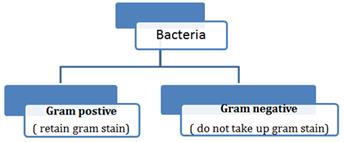
- In the bacterial cell, a chemically complex cell envelope is present, which consists of three layers. The outermost is Glycocalyx, middle one cell wall and inner innermost is the cell membrane.
- Glycocalyax may be a loose sheath in some bacteria called slime layer. In some other bacteria, Glycocalyx may be thick and tough called capsule.
- Plasma membrane is semi-permeable having mesosomes in the form of vesicles, tubules, and lamellae. They help in cell wall formation, DNA replication, and distribution to daughter cells.
- Motile bacterial cell contains flagella, which is composed of filament, hook, and the basal body. Pili and fimbriae are the other surface structures that help the bacteria to attach to the host and other substances.
- In prokaryotes, ribosomes are attached with cell membrane having two sub-units – 50S and 30S to form together 70S prokaryotic ribosomes.
- Ribosomes are the site of protein synthesis. Ribosomes attached with mRNA to form a chain are called polyribosomes.
- Reserved materials in prokaryotic cells are present in the cytoplasm as cell inclusion bodies, which may contain phosphate, granules, glycogen granules, etc.
- Gas vacuoles are found in blue-green algae and purple and green photosynthetic bacteria.
Eukaryotic Cell
- Eukaryotic cells are present in Protista, Plants, Animals, and Fungi. The cytoplasm is divided into compartments due to the presence of membrane-bounded organelles.
- The cells contain a well-organized nucleus with a nuclear membrane. The genetic materials are arranged in chromosomes.
- Plants cells differ in having cell walls, plastids, and large central vacuoles as compared to animal cells. Animal cells have centrioles, which are absent in plant cells.

Plant cell
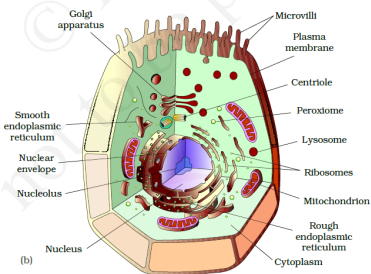
Animal cell
- Cell membrane is composed of lipids that are arranged in a bilayer. The lipid component is mainly composed of phosphoglycerides. Later it was found that protein is also present in the cell membrane. The ratio of protein and lipids varies in different cells.
- Membrane protein may be integral or peripheral. Integral protein remains buried in the membrane but peripheral protein lies on the surface.
- Singer and Nicholson (1972) proposed a fluid mosaic model. According to this model, the quasi-fluid nature of lipid enables lateral movement of protein within the bilayer of lipids.
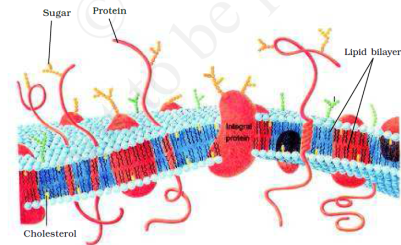
- The main function of the plasma membrane is the transport of molecules across it.
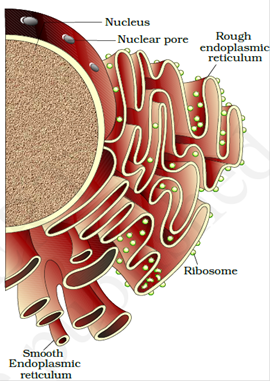 The movement of water from higher concentration to lower concentration by diffusion is called osmosis.
The movement of water from higher concentration to lower concentration by diffusion is called osmosis.- Cell wall is present in plant cells and fungi. Algae have cell walls made up of cellulose, Galatians, and minerals like calcium carbonate. In other plants, it consists of cellulose, hemicellulose, pectin, and proteins.
- Primary cell wall of the young plant is capable of growth, which diminishes in mature cells. A secondary cell wall is formed on the inner side of the cells.
- Plasmodesmata connects the cytoplasm of neighboring cells.
- Endomembrane system of the cell includes the endoplasmic reticulum, Golgi complex, lysosomes, and vacuoles.
- Endoplasmic Reticulum is the tubular structure scattered in the cytoplasm.
- Rough endoplasmic reticulum bears ribosomes on its surface. RER is involved in protein synthesis and secretion.
- Smooth endoplasmic reticulum does not bear ribosomes on its surface. SER is involved in lipid synthesis and steroidal hormones.
- Golgi apparatus was first observed by Camillo Golgi in 1898 near the nucleus. They consist of many flat, disc-shaped sacs or cisternae stacked parallel to each other.
- Golgi apparatus performs the function of packaging materials and their transportation. Several proteins synthesized by ribosomes are modified in cisternae of the Golgi apparatus. Golgi apparatus is the site for the synthesis of Glycoproteins and glycolipids.
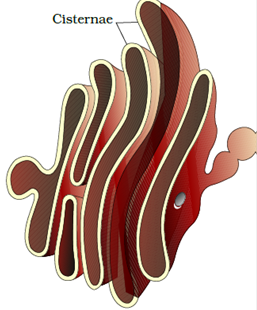
- Lysosomes are membrane-bound vesicular structures formed by the process of packaging in the Golgi apparatus. They are rich in hydrolytic enzymes- lipase, protease, carbohydrases active at acidic PH. These enzymes are capable of digesting carbohydrates, proteins, lipids, and nucleic acids.
- Vacuoles are membrane-bound spaces found in cytoplasm containing water, sap, and excretory product. They are bound by a single membrane. They form contractile vacuole and food vacuole in many organisms.
- Mitochondria is a double membrane-bound structure with the outer membrane and inner membrane dividing its lumen into two compartments. The inner membrane forms several infoldings called cristae towards the matrix.

- Two membranes have their own specific enzyme.
- Mitochondria are sites for aerobic respiration. They produce cellular energy in form of ATP so, they are called the powerhouse of the cells. The matrix of mitochondria also contains circular DNA molecules, a few RNA molecules, ribosomes, and components of protein synthesis.
- Plastids are found in plant cells and in Euglenoids.

- Chloroplast contains chlorophyll that traps solar energy for photosynthesis. Chromoplast provides yellow, orange, and red colors to different parts of plants.
- Leucoplasts are colorless plastids that store food, amyloplasts (carbohydrates), elaioplasts (oils), and aleuroplasts (proteins).
- Chloroplasts are double-membrane structures. The space limited by the inner membrane is called the stroma. Thylakoids are present in the stroma as stacks like the piles of coins called grana.
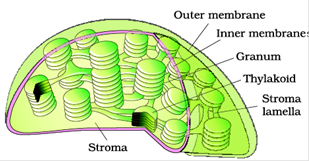
- Stroma contains enzymes for the synthesis of protein and carbohydrates. Double strand circular DNA and ribosomes are also present in the stroma.
- Eukaryotic cells have 80S ribosomes. They have a granular structure with two subunits.
- Centrosome is an organelle containing two cylindrical structures called centrioles. Each centriole is made up of 9 fibrils of tubulin protein. The central part of the centriole is called a hub and peripheral fibrils are called spokes.
- Nucleus has highly extended, elaborate nucleoprotein fibers called chromatin, nuclear matrix, and nucleoli. The outer membrane is continuous with the endoplasmic reticulum and bears ribosomes.
- The chromatin materials change into chromosomes during active cell division. It consists of DNA and histone proteins.
- Every chromosome has a primary constriction or the centromere, on the sides of which disc-shaped kinetochores are present.
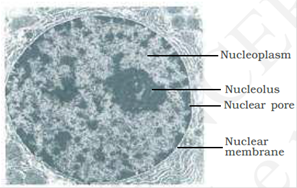
- based on the position of the centromere, chromosomes are of the following types-
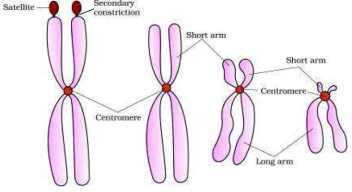
Some chromosomes have a non-staining secondary constriction at a certain location. This gives a small fragment called a satellite.
Download Allen Notes -
© All Rights Reserved. Designed and Developed by Anmol Verma
